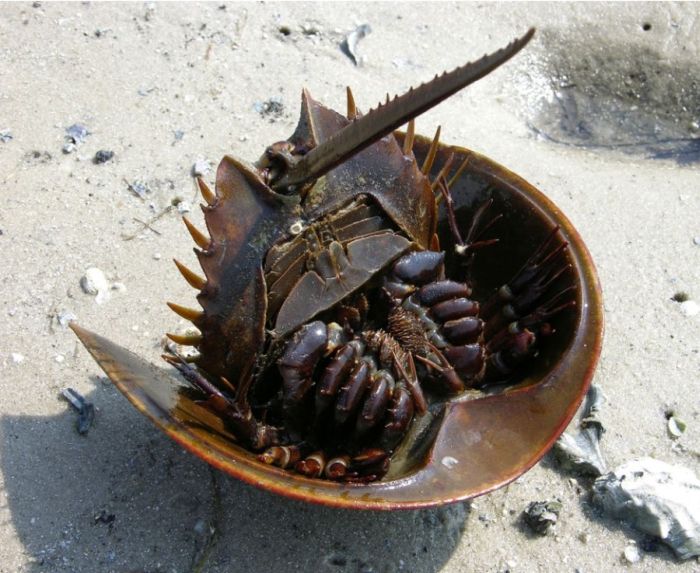|
|
Horseshoe Crab
|
Blood
Unlike humans, horseshoe crabs do not have hemoglobin in their blood, but instead use hemocyanin to carry oxygen. Because of the copper present in hemocyanin, their blood is blue. Their blood contains amebocytes, which play a role similar to white blood cells for vertebrates in defending the organism against pathogens. Amebocytes from the blood of L. polyphemus are used to make Limulus amebocyte lysate, which is used for the detection of bacterial endotoxins.
Harvesting horseshoe crab blood involves collecting and bleeding the animals, and then releasing them back into the sea. Most of the animals survive the process; mortality is correlated with both the amount of blood extracted from an individual animal, and the stress experienced during handling and transportation. Estimates of mortality rates following blood harvesting vary from 3% to 15%.
|
|









